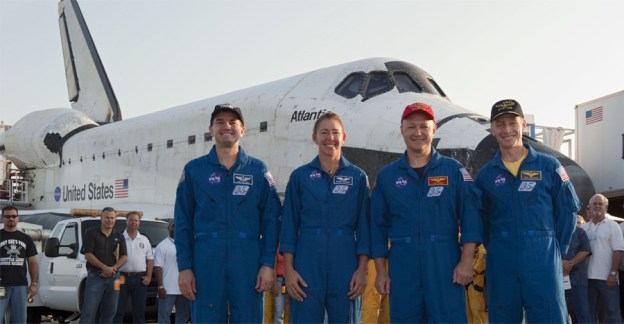 Mere weeks after NASA closed up shop on the space shuttle program, the crew of the final space shuttle mission are headed to the Big Apple to reflect on their historic flight.
Mere weeks after NASA closed up shop on the space shuttle program, the crew of the final space shuttle mission are headed to the Big Apple to reflect on their historic flight.
Commander Chris Ferguson, pilot Doug Hurley, and mission specialists Sandra Magnus and Rex Walheim of Shuttle Atlantis will be in Manhattan this week to attend a series of public events intended to raise awareness of their flight and share their experience with students, museum guests, and fans. On top of all that, they’re planning a trip to Sesame Street, too.
During their visit to New York City, the team will also take some time out to catch up with Elmo, the Sesame Street regular who attended July’s launch of the Atlantis shuttle.
As we reported last month, the space shuttle program ended with a perfect landing by Atlantis on July 21, wrapping up 135 flights over 30 years. The shuttles are now being retired to museums while NASA turns its attention to deep-space research made possible by private spaceflight companies.
The agency recently awarded $10 million in contracts to seven private companies specializing in space-travel initiatives.
Along with funding space-travel options in the private sector, NASA also offered up some financial support for 30 research projects covering a wide variety of space-related goals. Included among the 30 projects is everything from ways to reduce the amount of debris orbiting Earth to 3-D printers that will aid in the construction of planetary outposts.



